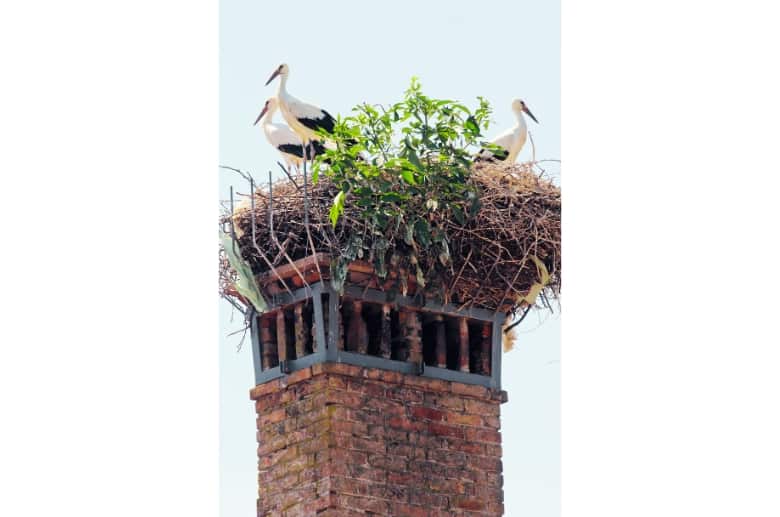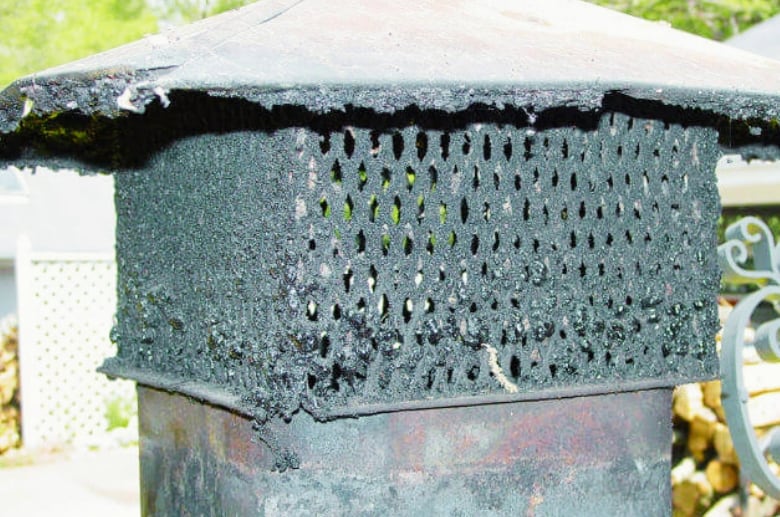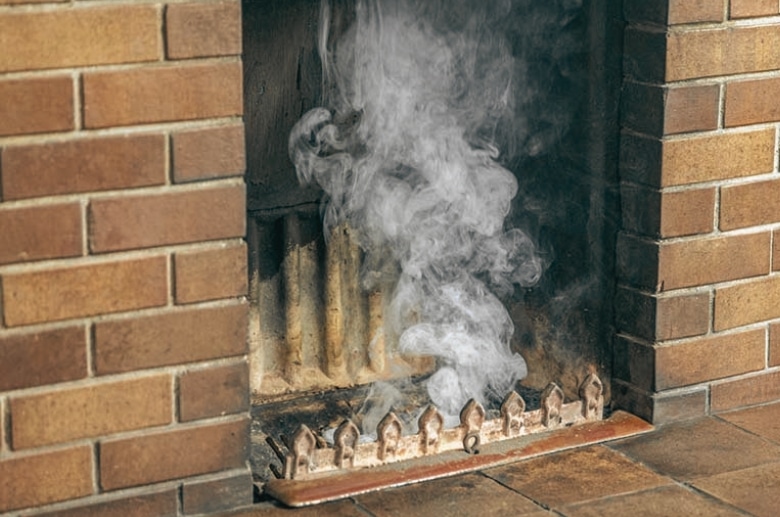Imagine that after a long day at work, you sit on your cozy sofa to watch your favorite movie. But for some reason, your living room is cold even though the fireplace is lit. Such frustrating scenarios often occur because of a clogged chimney.
While chimneys are essential for heating your house, they may pose a problem if they get clogged now and then. That is why it’s important to ask yourself, ‘Why does my chimney keep getting clogged?’
Fortunately, we have an answer for you. But before that, let’s review why clogged chimneys are dangerous.
Dangers of a Clogged Chimney
A clogged chimney is extremely dangerous because it can risk your family’s health and safety.
Burning wood or coal in your fireplace releases harmful gases (such as carbon monoxide and sulfur oxide). An operational chimney would exhaust these harmful gases, but a clogged chimney cannot do that.
Since the harmful gases have no way out, they enter living spaces. Exposure to carbon monoxide and other harmful gases can cause health issues like dizziness, nausea, or even lung-related problems. The CDC reports that 420 people die yearly from carbon monoxide poisoning.
A clogged chimney contains large soot and creosote deposits. Since these deposits are highly flammable, a clogged chimney is always at risk of a chimney fire. Chimney fires are dangerous and can often lead to house fires.
Why Does My Chimney Keep Getting Clogged?
To fix a clogged chimney, it’s essential first to figure out why it’s getting blocked. Once you know the underlying cause, only then can you fix the issue of a clogged chimney.
Here are some of the most common causes of chimney clogging:
Creosote Buildup

Creosote is black soot accumulating in your chimney when smoke doesn’t escape properly. When you burn wood or coal, they release smoke that has traces of creosote.
The biggest culprit behind creosote buildup is unseasoned wood. When you burn wet wood, the moisture inside will make it difficult to burn properly and create extra smoke. Since proper combustion does not occur, the unburnt wood residue is produced as creosote buildup.
Creosote is dangerous if left on its own. In the first stage, you can pick up a brush and clean the creosote to prevent it from worsening.
However, if the buildup is more than what you can handle, we highly suggest you call in an expert. Creosote buildup can lead to chimney fires which can cause house fires and potentially harm you and your family. It makes you and your family vulnerable to toxic gases such as carbon monoxide and sulfur oxide.
Debris and Animal Nest Blockages

Another common cause is chimney blockages due to debris and animal nests.
Random objects like twigs, branches, or leaves may accumulate in your chimney. This will choke the chimney’s passage and prevent smoke from getting out, leading to carbon monoxide poisoning or even chimney fires.
Animals (such as birds, raccoons, or squirrels) may make nests in the chimney, blocking the flue. What’s worse is that their nests include twigs and branches, which are highly flammable. This creates the perfect environment for a fire to erupt, potentially harming you, your house, and your family.
If you sense this issue, immediately contact a professional chimney sweeping service and let them clear out nests or debris from your chimney.
Clogged Chimney Cap

A chimney cap sits on top of a chimney to prevent water leaks, debris, animals, or random objects from clogging your chimney. But homeowners often forget that chimney caps can also get clogged.
Dust, debris, and fallen leaves are just a few of the many things that can clog the mesh of your chimney cap.
You can use a scrubbing (wire) brush to wipe off dirt and debris from the chimney cap. Upon inspection, if you notice that you won’t be able to clean off the debris or if the chimney cap is beyond your reach, it’s better to rely on professionals to scrub the chimney cap clean.
Chimney Design Issues
If you have checked all the boxes and the problem persists, your chimney is poorly designed. If your chimney is poorly designed, it will directly affect its airflow and prevent harmful gas from getting out.
We’ll paint you a picture of what a poorly designed chimney might look like:
- Improper placement: The chimney is placed where there are trees or other obstructions.
- Wrong height: If the chimney’s height is too short, it will lead to creosote buildup. Generally, your chimney should be (at least) 3 feet higher than where it goes above your roof’s highest point. Moreover, your chimney top should be 2 feet higher than any tree or building within 10 feet.
- Incorrect sizing: The chimney’s height should correspond with that of the fireplace or the furnace. If the sizing is incorrect, there won’t be enough space for the draft to vent the released gases properly. This can cause carbon monoxide poisoning.
Signs of Clogged Chimney
Here’s a run-down of the most common signs of a clogged chimney.

- Debris in your fireplace: If you notice twigs, branches, or uncommon objects resting in your fireplace, look at the top of your chimney. Chances are, it’s clogged and needs cleaning.
- Excessive smoke: If the smoke from your fireplace comes into your room, your chimney is blocked. In such cases, call in a professional for help.
- Smoke Detector: A smoke detector’s job is to alert you if it senses smoke or carbon monoxide in its range. If the alarm starts ringing, carbon monoxide is building up in your house, probably because the chimney is clogged.
- Soot accumulation: A tar-like substance in your fireplace or near the chimney is a clear sign of a clogged chimney. This buildup develops with time and worsens if left untreated.
Cleaning a Clogged Chimney
The easiest way to get your chimney cleaned is to rely on an expert. They have all the skills, tools, and experience to quickly identify what’s wrong and get your chimney back in shape. They can look at your chimney’s design and even make the necessary repairs to prevent it from getting clogged.
A convenient way to find qualified chimney cleaning services is to ask around your neighborhood or friends for referrals. You can also search online and read customer reviews on their website, Facebook page, etc.
However, if you clean your chimney from time to time, you might not need to call anyone. You can take a brush or a vacuum and sweep the soot or debris accumulating on your chimney. This is only applicable if the problem is at a basic level. A brush won’t cut if there’s a huge creosote buildup in your chimney.
Tips To Prevent Future Chimney Clogs
Prevention is the best medicine. Here’s how you can prevent your chimney from getting clogged in the future:
- Use only seasoned or dry firewood. Wet wood is not recommended since it creates a lot of smoke leading to creosote buildups and, ultimately, house fires.
- Don’t burn trash or random objects in your fireplace, like cardboard or paper, since they also excrete excessive smoke and large amounts of ash.
- Schedule regular chimney inspections. Hire a professional service to thoroughly inspect your chimney at least once every year. This is especially important if you use your fireplace frequently.
Conclusion
We’ve answered the question, “Why does my chimney keep getting clogged?” The most common causes of chimney buildups are creosote accumulation caused by wet wood, debris, nest blockages, clogged chimney caps, and poor design.
The dangers of not getting your chimney cleaned are carbon monoxide poisoning, which can cause severe health issues for you and your loved ones, and chimney fires, which can lead to house fires and, in worst-case scenarios, death.
Homeowners should regularly get their chimneys cleaned and inspected by a professional chimney sweep. If your chimney is cleaned occasionally, you will avoid the most common chimney problems homeowners face.






